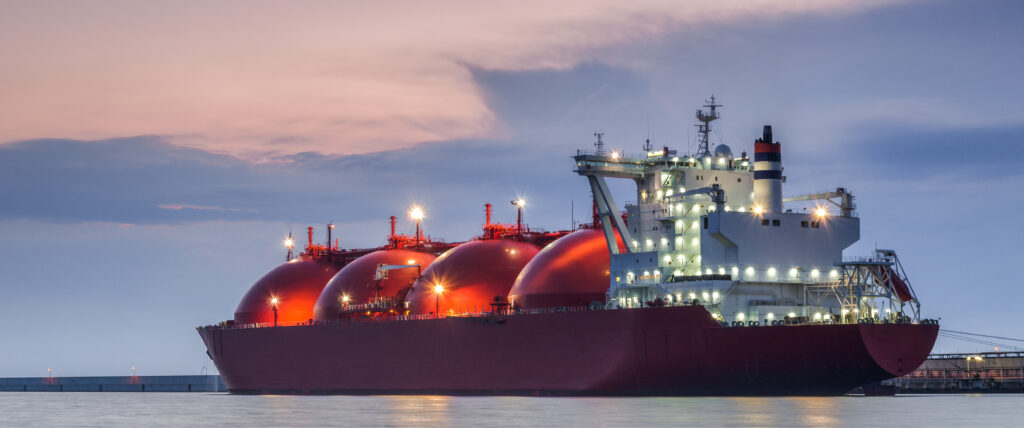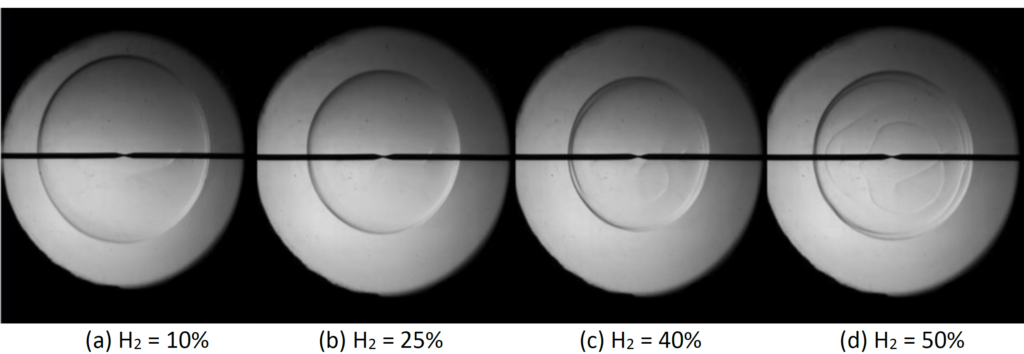Adapting Gas Turbine Design for a Changing Global Landscape

Shipping liquid natural gas (LNG) is now a major global industry

Dr Seif-Eddine Zitouni
The world’s reliance on natural gas as a source of energy has been increasing for many decades, a trend that is expected to continue in coming years. Intermittent supply of electricity from renewables, limited availability of other fossil fuels and tighter emissions controls are all driving the use of natural gas for the supply of both electricity and heat. In the UK, the total energy consumption fulfilled by natural gas was 35.3% in 2018, up from 4.7% in 1970; whilst coal shrunk from 43.9% to 3.9% over the same period [1].
Natural gas is typically a mix of hydrocarbon gases that vary based on where it came from, how it was extracted and the refinement process. For the UK and Northern Europe that used to mean North Sea gas, typically 95% methane. In other locations there can be a significant difference; one set of examples show the USA and Abu Dhabi having between 80-85% methane with the remainder mostly being ethane, whereas Canada has higher proportions of propane (around 3%). Small variations in the natural gas mixture can have a profound impact on combustion resulting in variations in energy output, safety of operation and the emissions of gas turbines. Traditionally gas turbines would be optimised for the local gas supply and historically its composition would not have fluctuated greatly.
An unpredictable road ahead
However, the landscape of natural gas has changed rapidly in recent years, forcing gas turbine manufacturers and operators to adapt their businesses.
Modern advances in the preparation and transportation of natural gas in liquid form (Liquid Natural Gas, or LNG) means that shipping natural gas around the world is now an everyday reality. Dwindling local supplies in some areas of the world combined with the rising trade of LNG mean that manufacturers and operators of gas turbines can no longer rely on the local gas mixture they have been used to in the past. Gas turbines must now be flexible in their design and operation parameters. Adding to the complexity of the roadmap for gas turbine design, policy makers around the world along with gas producers and suppliers are still unsure of what the future of the gas network might look like in a net zero 2050 scenario. This means that it is important for gas turbine research to investigate all possible gas mixtures and alternate fuels.
Shipping natural liquid gas (LNG)
Concerns over fuel security and supply have driven development towards an optimised fuel economy, minimised pollutants and potential adoption of alternative fuels and combustion techniques, steering research towards lean premixed operating systems, exhaust gas recirculation, flame cooling and flameless combustion among other techniques. However, to implement these methods, detailed research must be conducted to gain insight and understanding of combustion behaviour with measurement of physio-chemical properties. The main aim of this research was to investigate the impact of fuel flexibility and interchangeability on gas turbines, focussing especially on the influence of LNG imports and blending of hydrogen into the natural gas network.
Taking a lean approach
Blending natural gas with hydrogen is gaining popularity as an option to decarbonise the gas grid in the near term whilst also paving the way for an eventual switch to a full hydrogen economy. Substituting hydrogen for a proportion of the hydrocarbon gases has the effect of increased flame speed, a key parameter describing how the gas burns. A higher flame speed potentially means that the gas turbine can be run ‘leaner’, which is to say using a higher air to fuel ratio. This leads to a lower flame temperature and ultimately lower emissions. The flame temperature is a leading indicator of harmful pollutants; a lower temperature means fewer Nitrous Oxide compounds (NOx) form, and less hydrocarbon gas in the fuel mixture creates less Carbon Monoxide (CO) as well as reducing Carbon Dioxide (CO2) output.
The research undertaken at Cardiff University’s Gas Turbine Research Centre was focused upon the influence of changes in natural gas/hydrogen mixture on lean-operability stability limits. Blends of up to 50% hydrogen and 50% natural gas have been tested, producing interesting observations of flame stability. High speed cinematography was used to capture images of how a spherical flame progresses as it expands within the specialised combustion vessel. With a more complete picture of the fundamental behaviour of premixed hydrogen/natural gas flames, the researchers investigated the behaviour of lean limit, turbulent flames using a premixed generic swirl burner, more representative of commercial gas turbine configurations.

High speed imagery of spherical flames
Redefining old standards for a new tomorrow
One important finding of this research was discovered in how the gas turbine industry characterises the interchangeability of gases. Current parameters such as the Wobbe Index may not be suitable to characterise the variable fuel supply of the future. These characterisation indexes use relationships and calculations that have been shown to not necessarily hold true when considering possible future gas mixes, meaning that two different gas blends with the same Wobbe Index value might burn entirely differently. As a result, variations in ignition delay times, flames speeds, flame temperature and flame chemistry could potentially lead to serious consequences in gas turbines leading to emissions and safety issues.
With ever-more fuel flexibility looking likely in the future, the efficient, safe and clean use of gas turbines will require significant fundamental research. The expert researchers and cutting edge test facilities developed at the Cardiff University Gas Turbine Research Centre in the FLEXIS Demonstration Area are building vital research capability to guide the design of highly flexible gas turbines that are fit for a low carbon energy industry.


